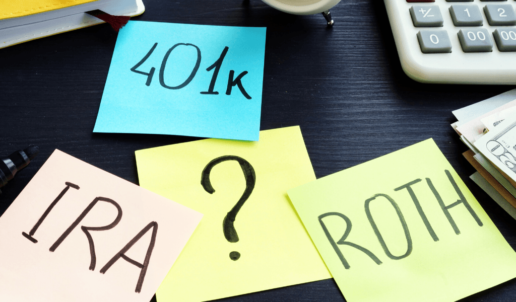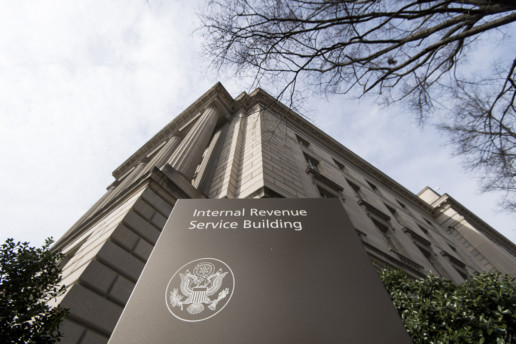IRS increases retirement contributions for 2020
Recently, the Internal Revenue Service (IRS) announced that workers contributing to 401(k), 403(b), 457 and the federal government’s Thrift Savings Plans will be able to add up to $19,500 in 2020. Read this blog post to learn more about this increase in retirement contributions.
The IRS said this week that workers contributing to 401(k), 403(b), 457 and the federal government’s Thrift Savings Plans plans can add $19,500 next year, an increase from $19,000 in 2019.
The move could help workers save more for retirement, but it may be inconvenient for employers who’ve already started open enrollment, experts say. Employees are now able to set aside $500 more for retirement.
“Every penny counts when you’re saving for retirement, and the higher contribution limit is definitely going to help,” says Jacob Mattinson, partner at McDermott, Will & Emery, a Chicago-based law firm. “But since companies are in the midst of open enrollment, employers may have to go back in and change the entries for employees who want to contribute the max.”
There are about 27.1 million 401(k) plan participants using roughly 110,794 employer-sponsored 401(k) plans, the Employee Benefit Research Institute says. Ninety-three percent of employers offer a 401(k) plan, and around 74% of companies match workers’ contributions, according to data from the Society for Human Resource Management.
While the vast majority of employers do offer retirement savings plans, employees may still be struggling to sock away money. Around 70% of workers say debt has negatively impacted their ability to save for retirement, EBRI says.
“Thirty-two percent of workers with a major debt problem are not at all confident about their prospects for a financially secure retirement, compared with 5% of workers without a debt problem,” says Craig Copeland, EBRI senior research associate.
The IRS also upped contribution limits on Savings Incentive Match Plan for Employees plans, or SIMPLE retirement accounts, to $13,500 from $13,000. The agency did not change the contribution limits to IRAs, which remain at $6,000 annually.
SOURCE: Hroncich, C. (7 November 2019) "IRS increases retirement contributions for 2020" (Web Blog Post). Retrieved from https://www.benefitnews.com/news/irs-increases-retirement-contributions-for-2020
How to Find an Old 401(k) — and What to Do With It
According to the U.S. Government Accountability Office, there are more than 25 million people with money left behind in a previous employer-sponsored retirement plan. Read this blog post from NerdWallet for information on how to find an old retirement plan and what to do with it.
There are billions of dollars sitting unclaimed in ghosted workplace retirement plans. And some of it might be yours if you’ve ever left a job and forgotten to take your vested retirement savings with you.
It happens. A lot.
The U.S. Government Accountability Office reports that from 2004 through 2013, more than 25 million people with money in an employer-sponsored retirement plan like a 401(k) left at least one account behind after their last day on the job.
But no matter how long the cobwebs have been forming on your old 401(k), that money is still yours. All you have to do is find it.
Following the money
Employers will try to track down a departed employee who left money behind in an old 401(k), but their efforts are only as good as the information they have on file. Beyond providing 30 to 60 days notice of their intentions, there are no laws that say how hard they have to look or for how long.
If it’s been a while since you’ve heard from your former company, or if you’ve moved or misplaced the notices they sent, there are three main places your money could be:
- Right where you left it, in the old account set up by your employer.
- In a new account set up by the 401(k) plan administrator.
- In the hands of your state’s unclaimed property division.
Here’s how to start your search:
Contact your old employer
Start with your former company’s human resources department or find an old 401(k) account statement and contact the plan administrator, the financial firm that held the account and sent you updates.
"You may be allowed to leave your money in your old plan, but you might not want to."
If there was more than $5,000 in your retirement account when you left, there’s a good chance that your money is still in your workplace account. You may be allowed to leave it there for as long as you like until you’re age 70½, when the IRS requires you to start taking distributions, but you might not want to. Here’s how to decide whether to keep your money in an old 401(k).
Plan administrators have more leeway with abandoned amounts up to $5,000. If the balance is $1,000 or less, they can simply cut a check for the total and send it to your last known address, leaving you to deal with any tax consequences. For amounts more than $1,000 up to $5,000, they’re allowed to move funds into an individual retirement account without your consent. These specialty IRAs are set up at a financial institution that has been federally authorized to manage the account.
The good news if a new IRA was opened for the rollover: Your money retains its tax-protected status. The bad: You have to find the new trustee.
Look up your money’s new address
If the old plan administrator cannot tell you where your 401(k) funds went, there are several databases that can assist:
- A good place to start is with the Department of Labor’s abandoned plan database.
- FreeErisa also maintains a rundown of employee benefit plan paperwork.
- If you were covered under a traditional pension plan that was disbanded, search the U.S. Pension Guaranty Corp. database of unclaimed pensions.
- There’s also the National Registry of Unclaimed Retirement Benefits, which works like a “missed connections” service whereby companies register with the site to help facilitate a reunion between ex-employees and their retirement money. Not every company is registered with this site, so if none of these searches yields results, move on to the next step.
Search unclaimed property databases
If a company terminates its retirement plan, it has more options on what it’s allowed to do with the unclaimed money, no matter what the account balance.
"If your account was cashed out, you may owe the IRS."
It might be rolled into an IRA set up on your behalf, deposited at a bank or left with the state’s unclaimed property fund. Hit up missingmoney.com, run in part by the National Association of Unclaimed Property Administrators, to do a multistate search of state unclaimed property divisions.
Note that if a plan administrator cashed out and transferred your money to a bank account or the state, a portion of your savings may have been withheld to pay the IRS. That’s because this kind of transfer is considered a distribution (aka cashing out) and is subject to income taxes and penalties. Some 401(k) plan administrators withhold a portion of the balance to cover any potential taxes and send you and the IRS tax form 1099-R to report the income. Others don’t, which could leave you with a surprise IRS IOU to pay.
What to do with it
You might be able to leave your old 401(k) money where it is if it’s in your former employer’s plan. One reason to do so is if you have access to certain mutual funds that charge lower management fees available to institutional clients — like 401(k) plans — that aren’t available to individual investors. But you’re not allowed to contribute to the plan anymore since you no longer work there.
Reasons to move your money to an IRA or to roll it into a current employer’s plan include access to a broader range of investments, such as individual stocks and a wider selection of mutual funds, and more control over account fees.
If your money was moved into an IRA on your behalf, you don’t have to — and probably shouldn’t — leave it there. The GAO study of forced-transfer IRAs found that annual fees (up to $115) and low investment returns (0.01% to 2.05% in conservative investments dictated by the Department of Labor regulations) “can steadily decrease a comparatively small stagnant balance.”
Once you find your money, it’s easy to switch brokers and move your investments into a new IRA of your choosing without triggering any taxes.
Unless you enjoyed this little treasure hunt, the next time you switch jobs, take your retirement loot with you.
SOURCE: Yochim, D. (27 February 2019) "How to Find an Old 401(k) — and What to Do With It" (Web Blog Post). Retrieved from https://www.nerdwallet.com/blog/investing/how-to-find-an-old-401k-and-what-to-do-with-it/
DOL proposes rule on digital 401(k) disclosures
A new rule has been proposed by the Department of Labor (DOL) that is meant to encourage employers to issue retirement plan disclosures electronically. This rule would allow plan sponsors of 401(k)s and other defined-contribution plans to default participants with a valid email address to receive plan disclosures electronically. Read the following blog post to learn more.
The Department of Labor proposed a rule Tuesday that's meant to encourage more employers to issue retirement plan disclosures electronically to plan participants.
The rule would allow sponsors of 401(k)s and other defined-contribution plans to default participants with valid email addresses into receiving all their retirement plan disclosures — such as fee disclosure statements and summary plan descriptions — digitally instead of on paper, as has been the traditional route.
Participants can opt-out of e-delivery if they prefer paper notices. The proposed rule covers the roughly 700,000 retirement plans subject to the Employee Retirement Income Security Act of 1974.
"DOL rules have largely relied on a paper default," said Will Hansen, chief government affairs officer for the American Retirement Association. "Everything had to be paper, unless they opted into electronic default. This rule is changing the current standing."
Proponents of digital delivery believe it will save employers money and increase participants' retirement savings. The DOL also believes digital delivery will increase the effectiveness of the disclosures.
Plan sponsors are responsible for the costs associated with furnishing participant notices, and many small and large plans pass those costs on to plan participants, Mr. Hansen said. The DOL estimates its proposal will save retirement plans $2.4 billion over the next 10 years through the reduction of materials, printing and mailing costs for paper disclosures.
Opponents of digital delivery maintain that paper delivery should remain the default option. They have noted that participants are more likely to receive and open disclosures if they come by mail, and claim that print is a more readable medium for financial disclosures that helps participants better retain the information.
"We are reviewing the proposal carefully and look forward to providing comments to the Department of Labor, but we already know that in a world of information overload, many people prefer to get important financial information delivered on paper, not electronically," said Cristina Martin Firvida, vice president of financial security and consumer affairs at AARP. "The reality is missed emails, misplaced passwords and difficulties reading complex information on a screen mean that most people do not visit their retirement plan website on a regular basis."
President Donald J. Trump issued an executive order on August 2018 calling on the federal government to strengthen U.S. retirement security. In that order, Mr. Trump directed the Labor secretary to examine how the agency could improve the effectiveness of plan notices and disclosures and reduce their cost.
The DOL proposal, called Default Electronic Disclosure by Employee Pension Benefit Plans under ERISA, is structured as a safe harbor, which offers legal protections to employers that follow the guidelines laid out in the rule.
Retirement plans would satisfy their obligation by making the disclosure information available online and sending participants and beneficiaries a notice of internet availability of the disclosures. That notice must be sent each time a plan disclosure is posted to the website.
A digital default can't occur without first notifying participants by paper that disclosures will be sent electronically to the participant's email address.
The 30-day comment period on the proposal starts Wednesday. In addition, the DOL issued a request for information on other measures it could take to improve the effectiveness of ERISA disclosures.
SOURCE: Lacurci, G. (22 October 2019) "DOL proposes rule on digital 401(k) disclosures" (Web Blog Post). Retrieved from https://www.investmentnews.com/article/20191022/FREE/191029985/dol-proposes-rule-on-digital-401-k-disclosures
How 401(k) Taxes Work and How to Minimize the Tax Bill
Are you familiar with how 401(k) taxes work? Most 401(k) plans are tax-deferred, meaning that you won't pay income taxes until you withdraw the money you've put into your 401(k). Read this blog post for an overview of how these taxes work.
Most 401(k) plans are tax-deferred, which means you don’t pay income tax on the money you put into the account until you withdraw it. That makes the 401(k) not just a way to save for retirement; it’s also a great way to cut your tax bill. But there are a few rules about 401(k) taxes to know, as well as a few strategies that can get your tax bill even lower.
Here’s an overview of how 401(k) taxes work and how to pay less tax when the IRS asks for a cut of your retirement savings.
How do 401(k) taxes on contributions work?
Contributions to a traditional 401(k) plan come out of your paycheck before the IRS takes its cut. So if you earn $1,000 before taxes at work and you contribute $200 of it to your 401(k), that’s $200 less that you’ll be taxed on. When you file your tax return, you’d report $800 rather than $1,000.
- If your employer offers a Roth 401(k), that means you contribute after-tax money instead of pre-tax money as with the traditional 401(k). This has a few advantages (see the section about withdrawals).
- You still have to pay Medicare and Social Security taxes on your payroll contributions to a 401(k).
- In 2019, you can contribute up to $19,000 a year to a 401(k) plan, which means you can shield $19,000 a year from income taxes. If you’re 50 or older, you can contribute $25,000 in 2019.
- The annual contribution limit is per person, and it applies to all of your traditional or Roth 401(k) contributions in total.
- Your employer will send you a W-2 in January that shows how much it paid you during the previous calendar year, as well as how much you contributed to your 401(k) and how much withholding tax you paid.
Do 401(k) taxes apply while your money is in the account?
While money is in a traditional 401(k), you pay no taxes on investment gains, interest or dividends. This is true for a Roth 401(k), as well.
Roth 401(k) vs. Traditional 401(k)
| Traditional 401(k) | Roth 401(k) | |
| Tax treatment of contributions | Contributions are made pre-tax, which reduces your current adjusted gross income. | Contributions are made after taxes, with no effect on current adjusted gross income. Employer matching dollars must go into a pre-tax account and are taxed when distributed. |
| Tax treatment of withdrawals | Distributions in retirement are taxed as ordinary income. | No taxes on qualified distributions in retirement. |
| Withdrawal rules | Withdrawals of contributions and earnings are taxed. Distributions may be penalized if taken before age 59½, unless you meet one of the IRS exceptions. | Withdrawals of contributions and earnings are not taxed as long as the distribution is considered qualified by the IRS: The account has been held for five years or more and the distribution is:
Unlike a Roth IRA, you cannot withdraw contributions at any time. |
How do 401(k) taxes apply to withdrawals?
In technical terms, your contributions and the investment growth in a traditional 401(k) are tax-deferred — that is, you don’t pay taxes on the money until you make withdrawals from the account. At that point, you’ll owe income taxes to Uncle Sam. If you’re in a Roth 401(k), in most cases you won’t owe any taxes at all when you withdraw the money because you will have already paid the taxes upfront.
401(k) taxes if you withdraw the money in retirement
- For traditional 401(k)s, the money you withdraw is taxable as regular income — like income from a job — in the year you take the distribution (remember, you didn’t pay income taxes on it back when you put it in the account; now it’s time to pay the piper).
- For Roth 401(k)s, the money you withdraw is not taxable (you already paid the income taxes on it back when you put the money in the account).
- You can begin withdrawing money from your traditional 401(k) without penalty when you turn age 59½.
- You can begin withdrawing money from your Roth 401(k) without penalty once you’ve held the account for at least five years and you’re at least 59½.
- If you’ve retired, you have to start taking required minimum distributions from your account starting on April 1 of the year following the year in which you turn 70½.
- If you’re still working at age 70½, you can put off taking distributions from your traditional 401(k).
- If you don’t take the required minimum distribution when you’re supposed to, the IRS can assess a penalty of 50% of the amount not distributed.
- You can withdraw more than the minimum.
401(k) taxes if you withdraw the money early
For traditional 401(k)s, there are three big consequences of an early withdrawal or cashing out before age 59½:
- Taxes will be withheld. The IRS generally requires automatic withholding of 20% of a 401(k) early withdrawal for taxes. So if you withdraw the $10,000 in your 401(k) at age 40, you may get only about $8,000.
- The IRS will penalize you. If you withdraw money from your 401(k) before you’re 59½, the IRS usually assesses a 10% penalty when you file your tax return. That could mean giving the government another $1,000 of that $10,000 withdrawal.
- You may have less money for later, especially if the market is down when you start making withdrawals. That could have long-term consequences.
There are a lot of exceptions. This article has more details, but in a nutshell, you might be able to escape the IRS’s 10% penalty for early withdrawals from a traditional 401(k) if you:
- Receive the payout over time.
- Qualify for a hardship distribution with the plan administrator.
- Leave your job and are over a certain age.
- Are getting divorced.
- Are or become disabled.
- Put the money in another retirement account.
- Use the money to pay an IRS levy.
- Use the money to pay certain medical expenses.
- Were a disaster victim.
- Overcontributed to your 401(k).
- Were in the military.
- Die.
You can withdraw money from a Roth 401(k) early if you’ve held the account for at least five years and need the money due to disability or death.
7 quick tips to minimize 401(k) taxes
- Wait as long as you can to take money out of your account. Withdrawals are what can trigger taxes.
- If you must make an early withdrawal from a 401(k), see if you qualify for an exception that will help you avoid paying an early withdrawal penalty.
- See if you qualify for the Saver’s Credit on your contributions.
- Be careful with how you roll over your account. Rolling an old 401(k) account into another 401(k) or into an IRA usually won’t trigger taxes — if you get the money into the new account within 60 days. Otherwise, the IRS might consider the move a distribution, triggering taxes and maybe even a penalty.
- Borrow from your 401(k) instead of making an early withdrawal. Not all 401(k) plans offer loans, though. Also, in most circumstances you’ll need to repay the loan within five years and make regular payments. Check with your plan administrator for the rules.
- Use tax-loss harvesting. You might be able to offset the taxes on your 401(k) withdrawal by selling underperforming securities at a loss in some other regular investment account you might have. Those losses can offset some or all of the taxes on your 401(k) withdrawal.
- See a tax professional. There are other ways to minimize your 401(k) taxes, too, so find a qualified tax pro and discuss your options.
SOURCE: Orem, T. (19 September 2019) "How 401(k) Taxes Work and How to Minimize the Tax Bill" (Web Blog Post). Retrieved from https://www.nerdwallet.com/blog/taxes/401k-taxes/
SIMPLE IRA vs. 401(k): How to Pick the Right Plan
Should you choose a SIMPLE IRA or a 401(k) for retirement saving? There are pros and cons to both types for employers. Read this blog post from NerdWallet for more on these two plan types and how to choose the right one for you.
The decision between a SIMPLE IRA and a 401(k) is, at its core, a choice between simplicity and flexibility for employers.
The aptly named SIMPLE IRA, which stands for Savings Incentive Match Plan for Employees, is the more straightforward of the two options. It’s quick to set up, and ongoing maintenance is easy and inexpensive. But if you have employees, you are required to provide contributions to their accounts. (See our SIMPLE IRA explainer.)
Although a 401(k) plan can be more complex to establish and maintain, it provides higher contribution limits and gives you more flexibility to decide if and how you want to contribute to employee accounts. Another big difference is that you can opt for a Roth version of the plan, whereas the SIMPLE IRA allows no Roth provision.
SIMPLE IRA vs. 401(k)
Here are the need-to-know differences between SIMPLE IRAs and 401(k)s:
SIMPLE IRA |
401(k) |
|
| Employer eligibility | Employers with 100 or fewer employees | Any employer with one or more employees |
| Employee eligibility | All employees who have compensation of at least $5,000 in any prior 2 years, and are reasonably expected to earn at least $5,000 in the current year |
All employees at least 21 years old who worked at least 1,000 hours in a previous year |
| Employer contribution rules |
|
|
| Contribution limits |
|
|
| Administrative responsibilities | No annual tax filing requirements; annual plan details must be sent to employees | Subject to annual compliance testing to ensure plan does not favor highly compensated employees |
| Fees | Minimal account fees | Varies by plan |
| Investment options | Any investments available through the financial institution that holds accounts | Investment selection curated by employer and plan administrator |
| Pros |
|
|
| Cons |
|
|
| More details | What Is a SIMPLE IRA? | What Is a 401(k)? |
SOURCE: IRS.gov
SIMPLE IRA or 401(k): How to decide
Startup costs and ease of setup often dictate the choice between retirement savings plans. But there are other factors to consider as well. To help decide which plan is best, answer the following questions:
Why are you setting up a retirement plan?
For many small-business owners, the answer is that they’re trying to maximize their own retirement savings dollars. If that’s the case, contribution limits should weigh heavily in your decision. For high earners especially, the higher contribution limit of the 401(k) makes it a more attractive choice than a SIMPLE IRA.
How important is it to offer the Roth option?
As mentioned earlier, the IRS allows employers to offer a Roth 401(k). (Quick reminder: A Roth 401(k) is funded with after-tax contributions in exchange for tax-free distributions in retirement.) There is no Roth version of the SIMPLE IRA. The account is subject to many of the same rules as a traditional IRA: Contributions reduce your taxable income for the year, but distributions in retirement are taxed as ordinary income. That said, the IRS allows participants to save in both a SIMPLE IRA and a Roth IRA at the same time.
Will you need to adjust employer contributions?
Although a nice perk to attract potential employees, employer contributions are not required of companies that offer 401(k) plans. You also have the freedom to set vesting terms, which allows you to require employees remain employed by you for a set time before taking ownership of your contributions to their accounts. Employer contributions to employee SIMPLE IRA accounts are mandatory, though you can choose between two matching arrangements dictated by the IRS. Contributions to a SIMPLE IRA are immediately 100% vested.
You have other choices
If you are self-employed or a small-business owner, SIMPLE IRAs and 401(k) plans aren’t your only options. There are a variety of retirement plans at your disposal.
For example, if you run a business with no employees, a solo 401(k) is worth considering. As the employer and (your own) employee, you’re allowed to contribute a total of up to $56,000 in 2019 (or $62,000 if you’re age 50 or older).
A SEP IRA also has a high contribution limit for business owners and self-employed individuals, though there is no catch-up contribution for savers 50 or older. The drawbacks: Like the SIMPLE IRA, a SEP requires employers to contribute to eligible employee accounts, and no Roth version is allowed.
We’ve laid out the pros and cons for these and other retirement plan options for the self-employed.
SOURCE: Yochim, D. (8 June 2019) "SIMPLE IRA vs. 401(k): How to Pick the Right Plan" (Web Blog Post). Retrieved from https://www.nerdwallet.com/blog/investing/simple-ira-vs-401k-comparison-how-to-pick-the-right-plan/
A 401(k) plan administrators’ guide to the recent IRS revenue ruling
The IRS recently released a new revenue ruling that provides 401(k) plan administrators with helpful guidance on reporting and withholding from 401(k) plan distributions. Read the blog post below to learn more about this new ruling.
The IRS recently issued revenue ruling 2019-19. The revenue ruling provides 401(k) plan administrators with helpful guidance on how to report and withhold from 401(k) plan distributions when a plan participant actually receives the distribution but for some reason, does not cash the check.
Unfortunately, this new guidance does not provide answers to the complex issues that 401(k) plan administrators face when the plan must make a distribution, but the plan participant is missing.
Let’s hope revenue ruling 2019-19 is just the first in a series of much-needed guidance from the IRS and the Department of Labor about how 401(k) plan administrators should handle the increasingly common administrative issues related to uncashed checks and missing plan participants.
There are many situations in which a 401(k) plan must make a distribution to a plan participant. For example, plans must distribute small benefit cash outs (e.g., account balances that are $1,000 or less) or required minimum distributions to plan participants who reach age 70 and a half. This may come as a surprise, but plan participants fail to actually cash these checks with some regularity.
In the ruling, the IRS confirmed that 401(k) plan administrators should withhold taxes on a 401(k) plan distribution and report the distribution on a Form 1099-R in the year the check is distributed to the participant, even if the participant does not cash the check until a later year.
Similarly, the participant needs to include the plan distribution as taxable income in the year in which the plan makes the distribution even if the participant fails to cash the check until a later year. While this guidance is not surprising, it does provide clarity to 401(k) plan administrators as to how they must withhold and report normal course and required plan distributions. In particular, 401(k) plan administrators should not reverse the tax withholding or reporting of the distribution when the participant receives the distribution and simply does not cash the check until a later year.
Unfortunately, this new IRS guidance has limited use because the ruling uses an example that specifically concedes that the plan participant actually received the plan distribution check, but simply failed to cash it. What should 401(k) plan administrators do when the participant may not have received the distribution check at all (e.g., a check is returned for an invalid address) or the plan itself does not have current contact information for the participant?
Retirement plan administrators have an ERISA fiduciary obligation to implement a diligent and prudent process to find missing plan participants and to take additional steps to make sure participants actually receive plan distributions. Uncashed 401(k) plan distribution checks are still retirement plan assets which means the 401(k) plan administrator is still subject to ERISA fiduciary standards of care, prudence and diligence related to those amounts. As a result, the IRS and DOL have increased their focus on uncashed checks and missing participants in retirement plan audits.
Plan administrators would be well-served by establishing and implementing a consistent process to stay on top of any missing plan participants or uncashed checks and taking steps to locate those participants and properly address uncashed checks. Plan administrators should also carefully document the steps that they take in this regard. The IRS and DOL have currently provided limited guidance on the steps a 401(k) plan administrator can take to locate missing participants, but more guidance is needed — let’s hope revenue ruling 2019-19 is just the beginning.
This article originally appeared on the Foley & Lardner website. The information in this legal alert is for educational purposes only and should not be taken as specific legal advice.
SOURCE: Dreyfus Bardunias, K. (6 September 2019) "A 401(k) plan administrators’ guide to the recent IRS revenue ruling" (Web Blog Post). Retrieved from https://www.benefitnews.com/opinion/401k-administrators-guide-to-the-irs-revenue-ruling-2019-19
3 Tips for Maxing Out Your 401(k)
Using a 401(k) is a great way to save for retirement, but many people with access to a 401(k) struggle to max out their yearly contribution limits. Read this post for tips on how to max out your 401(k).
Saving in a 401(k) is a great way to build a solid nest egg for retirement -- which you'll definitely need since Social Security won't provide enough income for you to live on by itself. But many people with access to a 401(k) struggle to max out because the annual contribution limits are so high.
For 2019, workers under 50 can sock away up to $19,000 in a 401(k). Those 50 and older, meanwhile, can set aside up to $25,000. That's far more than this year's IRA contribution limits of $6,000 and $7,000, respectively.
See Also: At Saxon, we understand that you need to feel confident in your future.
Still, maxing out a 401(k) could be your ticket to an extremely comfortable retirement. If you were to max out your 401(k) at today's limits between ages 35 and 65, you'd wind up with $1.95 million if your investments were to generate an average annual return of 7% during those 30 years, which is more than doable with a stock-heavy portfolio. As such, it pays to push yourself to max out, and you'll be more likely to hit that goal if you do the following things.
1. Bank your bonus cash
Many of us come into extra money during the year, whether it's a performance bonus at work, a tax refund, or even a cash gift. If you pledge to put any funds that fall into that category into your 401(k), you'll boost your contribution rate without having to worry about slashing expenses.
2. Cut back on spending
Unless you get a really generous bonus, gift, or tax refund, you'll need to work on spending less if you're looking to max out a 401(k). But if you're willing to make some sacrifices, you can increase your contributions to the point where you save enough for your dream retirement. Comb through your budget and aim to cut back on smaller expenses, like your cable or cellphone bill. But if you're serious about maxing out a 401(k), you may need to think big -- like downsizing to a smaller home that slashes your mortgage and property tax payments by $1,000 a month.
3. Get a second job
You can only cut back on so many expenses before seriously impacting your quality of life. If you're not willing or able to go on an all-out expense-slashing spree, but you're eager to max out your 401(k), try getting yourself a second job. If you do, you'll be in good company. Of the millions of Americans who currently hold down a side hustle, an estimated 14% do so for the express purpose of funding a retirement plan.
Imagine you're able to work a lucrative side gig that puts an extra $1,000 in your pocket every month. Assuming you're under 50, if you were to put that money right into your 401(k), you'd only have to come up with another $7,000 over the course of a year to max out. That's a far easier notion than cutting expenses to the tune of $19,000.
Even if you don't manage to max out your 401(k) every year, doing it even a few years over the course of your career could really help. Remember, too, that when you fund a traditional 401(k), the money you contribute is income the IRS can't tax you on. This means that if your tax rate is 24%, and you manage to stick $19,000 in a traditional 401(k), you'll save yourself $4,560 right off the bat. And that's reason enough to work your hardest to contribute the maximum amount you can to your 401(k).
The Motley Fool has a disclosure policy.
SOURCE: Backman, M. (20 June 2019) "3 Tips for Maxing Out Your 401(k)" (Web Blog Post). Retrieved from https://www.fool.com/retirement/2019/06/20/3-tips-for-maxing-out-your-401k.aspx
Concerned about cybersecurity? Here’s how to protect 401(k) plans
Do you offer a 401(k) retirement plan to your employees? A new emerging cybersecurity risk for plan sponsors is retirement plans. Continue reading this blog post for tips on protecting 401(k) plans from cyberattacks.
All companies that manage personal consumer data are already concerned — or should be concerned — about cybersecurity. The scope and scale of cyberattacks continue to rise worldwide, as demonstrated last year by a breach that compromised data of 50 million Facebook users.
Retirement plans pose a new risk. Lawmakers are keen to protect the personal information of defined contribution plan participants. Recently, Sen. Patty Murray (D.-Wash.) and Rep. Bobby Scott (D.-Va.) asked the U.S. Government Accountability Office to “examine the cybersecurity of the private retirement system.”
Fortunately for plan sponsors, record-keepers and other parties in the retirement services industry, the same solution designed to address the multiple problems stemming from the upsurge in small, stranded 401(k) accounts — auto-portability — can also augment existing practices that protect plan participants’ personal data.
Auto-portability is the routine, standardized and automated transfer of a retirement plan participant’s 401(k) savings account from their former employer’s plan to an active account associated with their current job. This solution is underpinned by paired “locate” and “match” algorithms which work together to locate participants with multiple 401(k) plan accounts, confirm their identities, obtain consent for rolling over their stranded accounts. These accounts can exist in former employer plans or rolled into safe-harbor IRAs before they're moved into active accounts in their current employers’ plans. In addition, consolidation can include a roll-in to the participant’s current employer plan.
The act of consolidating accounts reduces the number of small accounts in the 401(k) system through auto-portability, which makes plan participant data more secure. Consolidating a participant’s multiple 401(k) accounts reduces the number of systems that store a participant’s data, and also encourages participants, sponsors and record-keepers to become more engaged when it comes to keeping track of accounts.
Auto-portability meets cybersecurity best practices
While there is currently no central legal framework regulating cybersecurity in the retirement services industry, the SPARK Institute published a compilation of recommended cybersecurity best practices for retirement plan record-keepers in 2017. Auto-portability, which went live that same year, operates in conformance to the SPARK Institute’s cybersecurity recommendations.
For example, the SPARK Institute, a retirement policy center in Simsbury, Connecticut, issued 16 security control objectives, including the practice of encryption, which requires protection of both “data-in-motion and data at rest.” The institute suggests that the same data protection risk management standards be applied to suppliers. To address cybersecurity, the institute suggests these steps:
- Encrypt all sensitive information subject to auto-portability using Advanced Encryption Standard 256-bit encryption, an industry standard developed by the National Institute of Standards and Technology. There is no known type of cyberattack that can read AES-encrypted data without having the cryptographic key.
- Never combine a Social Security number with other personally identifiable information in any single file transfer. The objective should be to ensure there is never enough personal data in any single transmission for a hacker to use to steal an identity. In addition, any file with personal information should never include the identity of either the plan’s sponsor or the record keeper. That further thwarts a hacker from accessing an individual participant’s retirement account.
- Know that auto-portability supports multiple methods of exchanging secure data.
- Ensure that any information flagged during the locate-and-match process that doesn’t adhere to certain criteria requires additional verification to confirm an identity.
- Conduct full address-location searches to ensure that the correct participant is found and properly matched to multiple accounts.
When participants strand 401(k) savings accounts in former-employer plans, and nothing is done to transport them to active accounts in their present employers’ plans, there’s a strong chance that the worker may fall victim to a cybercrime. Plan sponsors can protect themselves and their participants from hackers, and strengthen their overall cybersecurity preparedness, by implementing auto-portability to cull small accounts and missing participants.
SOURCE: Williams, S. (25 April 2019) "Concerned about cybersecurity? Here’s how to protect 401(k) plans" (Web Blog Post). Retrieved from https://www.benefitnews.com/opinion/how-to-protect-401k-plans-from-cybersecurity-risks
Half of older Americans have nothing in retirement savings
Almost half of Americans approaching retirement have nothing saved in a 401(k) or another individual account, according to the U.S. Government Accountability Office. Read this blog post to learn more.
The bad news is that almost half of Americans approaching retirement have nothing saved in a 401(k) or other individual account. The good news is that the new estimate, from the U.S. Government Accountability Office, is slightly better than a few years earlier.
Of those 55 and older, 48% had nothing put away in a 401(k)-style defined contribution plan or an individual retirement account, according to a GAO estimate for 2016 that was released Tuesday. That’s an improvement from the 52% without retirement money in 2013.
Two in five of such households did have access to a traditional pension, also known as a defined benefit plan. However, 29% of older Americans had neither a pension nor any assets in a 401(k) or IRA account.
The estimate from the GAO, the investigative arm of Congress, is a brief update to a more comprehensive 2015 report on retirement savings in the U.S. Both are based on the Federal Reserve’s Survey of Consumer Finances.
The previous report found the median household of those age 65 to 74 had about $148,000 saved, the equivalent of an inflation-protected annuity of $649 a month.
“Social Security provides most of the income for about half of households age 65 and older,” the GAO said.
The Employee Benefit Research Institute estimated earlier this month that 41% of U.S. households headed by someone age 35 to 64 are likely to run out of money in retirement. That’s down 1.7 percentage points since 2014.
EBRI found these Americans face a combined retirement deficit of $3.83 trillion.
SOURCE: Steverman, B.; Bloomberg News (27 March 2019) "Half of older Americans have nothing in retirement savings" (Web Blog Post). Retrieved from https://www.employeebenefitadviser.com/articles/half-of-older-americans-have-no-retirement-savings
Sidecar accounts can help plug 401(k) leakage — to an extent
Many 401(k) participants often dip into their retirement savings to help fund emergency expenses. In fact, the number 1 financial concern for Millennials and Generation X members is not having enough emergency savings for unexpected expenses. Read on to learn more.
Not having enough emergency savings for unexpected expenses is the No. 1 financial concern for millennials and members of Generation X, and the No. 2 financial concern among baby boomers, after retirement security. These findings from a PwC Employee Financial Wellness Survey released last year shouldn’t surprise members of the retirement services industry, since too many defined contribution plan participants dip into their 401(k) savings —through loans, hardship withdrawals or cash-outs upon changing jobs — to fund emergency expenses.
While 48% of households faced at least one expense related to an unexpected emergency over the past year, according to CIT Bank, a recent GoBankingRates survey has found that a staggering 62% of Americans have less than $1,000 in a savings account. The frequency of unexpected emergency expenses, and the lack of savings to fund them, work in tandem to create a situation where many Americans are forced to withdraw hard-earned retirement savings from 401(k) accounts in defined contribution plans, where they are safely incubated in the U.S. retirement system for future enjoyment. In fact, according to a Boston Research Technologies survey of 5,000 401(k) plan participants, slightly more than one-third of all 401(k) cash-outs upon job change are for emergencies, while the rest end up being used for discretionary spending.
The development of “sidecar” accounts, also known as “rainy day” funds, is a positive trend because these instruments can help plan participants avoid tapping into their retirement savings to pay emergency expenses. Sidecar accounts are set up alongside 401(k) savings accounts in defined contribution plans, and if an employee chooses to set one up, they can allocate after-tax contributions to the fund in order to reach a targeted amount of savings. When a sidecar fund reaches the desired amount, future contributions can be directed to the plan participant’s pre-tax retirement savings. If a participant dips into a sidecar fund, the targeted balance can be automatically replenished over time with future after-tax contributions.

Sidecar accounts can serve as a valuable tool for preserving retirement savings, and fortunately, our elected officials are attempting to make it easier for plan sponsors to offer them for participants. The Strengthening Financial Security Through Short-Term Savings Accounts Act of 2018, a bipartisan Senate bill sponsored by Senators Cory Booker (D-N.J.), Tom Cotton (R-Ark.), Heidi Heitkamp (D-N.D.), and Todd Young (R-Ind.), would allow sponsors to automatically enroll participants in sidecar or standalone accounts for emergency expenses. The bill would also enable the U.S. Department of the Treasury to create a pilot program giving employers incentives to set up these accounts. The bill hasn’t yet become law, but the fact that it’s been proposed is positive for the U.S. retirement system as a whole.
Vast majority of leakage is from cash-outs
Although a sidecar account could be a useful tool in the ongoing struggle to curtail leakage of savings from defined contribution plans, they won’t plug the biggest hole in the retirement system’s proverbial bucket. According to the U.S. Government Accountability Office, 89% of leakage is the result of premature cash-outs of 401(k) accounts. Loans, hardship withdrawals and other factors contribute to the remaining 11%. As mentioned above, with an estimated one-third of cash-outs taken to cover emergencies, two-thirds of cash-outs are for non-emergency expenses.
Unfortunately, the lack of widespread, seamless plan-to-plan portability causes too many participants to cash out, or simply leave their savings behind in a former employer’s plan, because doing so is easier than consolidating their 401(k) accounts in their current-employer plans.
Thankfully, there is a solution to address the 89% of leakage caused by cash-outs — auto-portability, which has been live for more than a year. Auto-portability is the routine, standardized and automated movement of a retirement plan participant’s 401(k) savings from their former employer’s plan to an active account in their current employer’s plan, and is specifically designed for accounts with less than $5,000. Key components of the auto-portability solution are the paired “locate” and “match” technologies for tracking down and identifying participants who have stranded 401(k) accounts in former-employer plans, which in turn enable the process of consolidating a participant’s savings in their current-employer plans.
Plugging the biggest hole in the U.S. retirement system bucket would help millions of Americans improve their retirement outcomes. The Employee Benefit Research Institute forecasts that, if auto-portability were implemented across the country, up to $1.5 trillion, measured in today’s dollars, would be preserved in the retirement system.
Fortunately for plan participants and sponsors alike, the White House and government agencies also realize the benefits of widespread auto-portability. The U.S. Department of Labor recently issued guidance on auto-portability through an advisory opinion as well as a prohibited transaction exemption clarifying fiduciary liability for sponsors who adopt auto-portability as a new feature of their automatic rollover service.
This crucial DOL guidance helps to clear the way for the nationwide implementation of auto-portability — helping all Americans, and especially women and minorities, save more for retirement. In his remarks at the White House in December (during the signing ceremony for the executive order establishing the White House Opportunity and Revitalization Council), Robert L. Johnson noted that 60% of African-Americans and Hispanic-Americans cash out their 401(k) accounts — and the nationwide adoption of auto portability “will put close to $800 billion back in the retirement pockets of minority Americans.”
Now that an innovative solution has been created to address the root cause of the majority of leakage (cash-outs), it’s good to see that a creative tool like the sidecar account has also been developed to help participants avoid making choices (i.e. dipping into their retirement savings to pay emergency expenses) that cause the remaining asset leakage.
SOURCE: Williams, S. (23 January 2019) "Sidecar accounts can help plug 401(k) leakage — to an extent" (Web Blog Post). Retrieved from https://www.benefitnews.com/opinion/sidecar-accounts-can-help-plug-401k-retirement-leakage?brief=00000152-14a7-d1cc-a5fa-7cffccf00000








